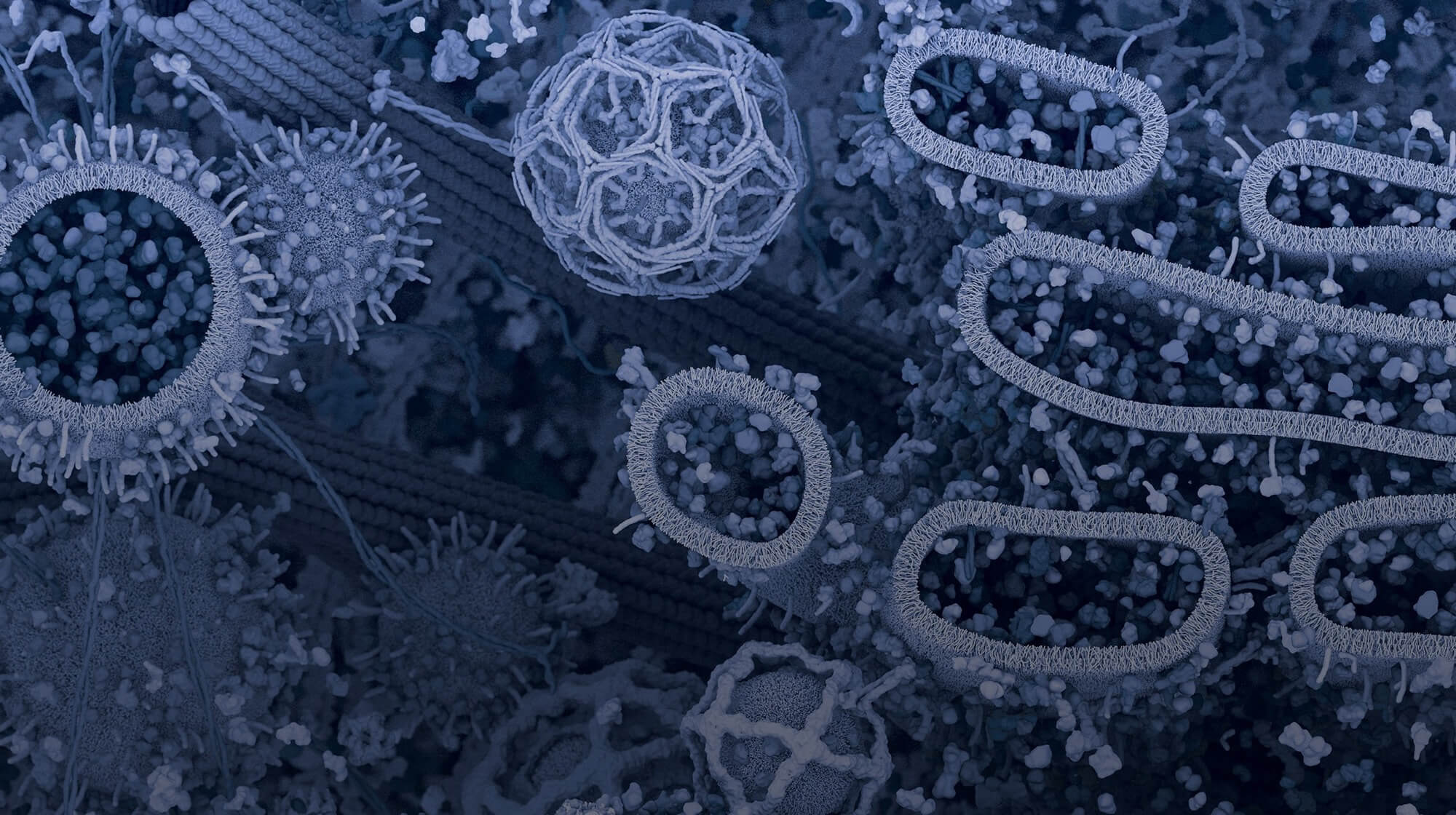In Mr. D’s sophomore English class, almost no subject was taboo or off-limits. Even with our class projects, he encouraged us to pursue topics that truly interested us, and sometimes that meant having to educate Mr. D about something entirely new to him. But if your presentation included stunning visuals, you had to be prepared to paint a word picture. Macular degeneration rendered his otherwise healthy eyes all-but-useless.
He might sometimes try his magnifying-glass-style spectacles, which made his eyes look nearly three times their actual size, but they didn’t do much. By his own account, he had 20/400 vision in his “good” eye and 20/800 vision in the bad one. His poor eyesight didn’t seem to dampen his spirits any, but like many afflicted with macular degeneration, Mr. D had resigned himself to the reality of a slowly dimming world.

In recent years, it seemed like there may be some good news for Mr. D and people like him. Researchers implicated inflammasome signaling as a key factor in age-related macular degeneration (AMD), with attention on the NLRP3 protein specifically (1-3). This would bring us closer to the goal: developing therapies against those forces that slowly obscure the outside world. However, according to a recent article in Scientific Reports, the validity of those studies has been questioned, and suspect antibodies are definitely the culprit.
There are two types of AMD: wet and dry. Decent therapies are available for wet AMD because we have a reasonable understanding of the disease mechanisms (4). On the other hand, we know that dry AMD involves the breakdown of retinal pigment epithelium (RPE), but the mechanisms behind dry AMD have been more elusive, which has hindered the development of therapeutic options (5). A popular hypothesis is that NLRP3 is a factor in the degeneration because of observed upregulation and expression in the RPE. However, other published data was contradictory, and the authors suspected that antibody sensitivity may have been a contributing factor to the discrepancies (6-12). Considering the new NIH guidelines requiring the authentication of key biological resources, the authors decided all this was worth further investigation.
They started by using well-established models of NLRP3 expression to put commercially available antibodies through a validation gauntlet. They assessed specificity of all antibodies using positive control models, knockout mice, and by looking for upregulation in response to NLRP3-inducing stimulus. They assessed sensitivity with a dilution series, which was done only with the CST antibody since all other antibodies failed the specificity tests or were not sensitive enough. Using the validated CST antibody, they looked for NLRP3 expression in human RPE cell lines and primary fetal RPE cultures treated with various NLRP3-inducing stimuli. The results indicate that these models do not express the protein. Therefore, it is unlikely that NLRP3 is a contributing factor to AMD (13).
Reproducibility is a hot issue right now. You’ve almost certainly heard horror stories like this one before, but have you asked the difficult questions about your own experiments? Do you trust your reagents to perform? How do you know that they will? This most recent report is bittersweet. We’re thrilled to know that our antibody passed the test. It ought to, given our rigorous validation standards! But this good news comes on the heels of bad. We never like to see setbacks amongst researchers. Even worse, we hate to see disease sufferers like Mr. D waiting for a cure.
References
- Doyle, S.L. et al. NLRP3 has a protective role in age-related macular degeneration through the induction of IL-18 by drusen components. Nat Med 18, 791–798, https://doi.org/10.1038/nm.2717 (2012).
- Doyle, S.L. et al. IL-18 attenuates experimental choroidal neovascularization as a potential therapy for wet age-related macular degeneration. Sci Transl Med 6, 230ra244, https://doi.org/10.1126/scitranslmed.3007616 (2013).
- Tarallo, V. et al. DICER1 loss and Alu RNA induce age-related macular degeneration via the NLRP3 inflammasome and MyD88. Cell 149, 847–859, https://doi.org/10.1016/j.cell.2012.03.036(2012).
- Rosenfeld, P. J. et al. Ranibizumab for Neovascular Age-Related Macular Degeneration. N Eng J Med 355, 1419–1431, https://doi.org/10.1056/NEJMoa054481 (2006).
- Deangelis, M. M., Silveira, A. C., Carr, E. A. & Kim, I. K. Genetics of age-related macular degeneration: current concepts, future directions. Semin Ophthalmol 26, 77–93, https://doi.org/10.3109/08820538.2011.577129 (2011).
- Anderson, O. A., Finkelstein, A. & Shima, D. T. A2E induces IL-1ss production in retinal pigment epithelial cells via the NLRP3 inflammasome. PLoS One 8, e67263, https://doi.org/10.1371/journal.pone.0067263 (2013).
- Gelfand, B. D. et al. Iron Toxicity in the Retina Requires Alu RNA and the NLRP3 Inflammasome. Cell Rep 11, 1686–1693, https://doi.org/10.1016/j.celrep.2015.05.023 (2015).
- Shi, G. et al. Inflammasomes Induced by 7-Ketocholesterol and Other Stimuli in RPE and in Bone Marrow–Derived Cells Differ Markedly in Their Production of IL-1b and IL-18. IOVS 56, 1658–1664, https://doi.org/10.1167/iovs.14-14557 (2015).
- Tseng, W. A. et al. NLRP3 inflammasome activation in retinal pigment epithelial cells by lysosomal destabilization: implications for age-related macular degeneration. Invest Ophthalmol Vis Sci54, 110–120, https://doi.org/10.1167/iovs.12-10655 (2013).
- Wang, K. et al. Amyloid beta induces NLRP3 inflammasome activation in retinal pigment epithelial cells via NADPH oxidase- and mitochondria-dependent ROS production. J Biochem Mol Toxicol. https://doi.org/10.1002/jbt.21887 (2016).
- Wang, Y. et al. NLRP3 Upregulation in Retinal Pigment Epithelium in Age-Related Macular Degeneration. Int J Mol Sci 17, https://doi.org/10.3390/ijms17010073 (2016).
- Zhang, S., Yu, N., Zhang, R., Zhang, S. & Wu, J. Interleukin-17A Induces IL-1beta Secretion From RPE Cells Via the NLRP3 Inflammasome. Invest Ophthalmol Vis Sci 57, 312–319, https://doi.org/10.1167/iovs.15-17578 (2016).
- Kosmidou C. et al. Issues with the Specificity of Immunological Reagents for NLRP3: Implications for Age-related Macular Degeneration. https://doi.org/10.1038/s41598-017-17634-1 (2018)








